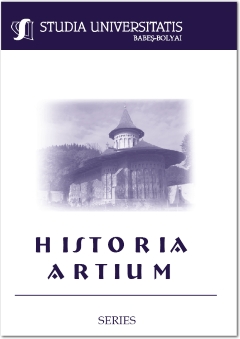ELEMENTE DE TRADIŢIE ŞI INOVAŢIE ÎN ICONOGRAFIA JUDECĂŢII DE APOI DIN BISERICILE MARAMUREŞENE DE LEMN
TRADITIONAL AND INNOVATIVE ELEMENTS IN THE LAST JUDGMENT ICONOGRAPHY IN THE WOODEN CHURCHES OF MARAMUREŞ
Author(s): Raluca BeteaSubject(s): Fine Arts / Performing Arts
Published by: Studia Universitatis Babes-Bolyai
Keywords: Last Judgment; Post-Byzantine painting; iconographic influences; Maramureş County.
Summary/Abstract: Traditional and Innovative Elements in the Last Judgment Iconography in the Wooden Churches of Maramureş. The image of the Last Judgment is characterized by its widespread presence throught the iconographic imagery of most wooden churches in the Maramureş County, immediately drawing attention for its detailed and wide compositions. In this article I propose to analyse the development of the Last Judgment iconography in the historical County of Maramureş. These images – wooden icons, wall paintings and coloured lithographs – were produced for the village churches belonging to the Eastern Rite Romanian and Ruthenian communities. The temporal focus of this study is the seventeenth-nineteenth centuries. The Maramureş compositions remained entrenched in the Byzantine tradition until the end of the nineteenth century. Except for a small number of iconographical motifs of Western influence, the compositions of Maramureş are composed of the main elements of the “classical” Byzantine composition and of motifs belonging to the late Byzantine and Post-Byzantine art, especially those typical of Russian and Ruthenian representations. One of the major conclusions of this study is that the Carpathian Rus’ iconography of the Last Judgment has exerted a great influence on the Maramureş compositions. However, along with representations of the Last Judgment depicted through the new technique of lithography, at the end of the nineteenth century and the beginning of the twentieth, there was a break in the Byzantine tradition; during this period the influence of Catholic art was considerable, the respective lithographs being characterized by Western iconography. The painters of Maramureş have sometimes shown proof of genuine originality in the way they express common elements of different geographical areas through painting, offering a personal and unprecedented interpretation (the images of the tollbooths, the personification of death). Furthermore, besides the different development of some of the iconographical elements, which saw an autochthonous evolution in Maramureş, these compositions are characterized by various innovations, typical only for this geographical area, as the image of Joachim and Anna, “Queen of the Earth”, the Prophet and bones, the depiction as inhabitants of Hell of certain county officials, the image of the sinners who did not fast and of those women which are guilty of sewing on Tuesdays and Fridays.
Journal: Studia Universitatis Babes Bolyai - Historia Artium
- Issue Year: LVIII/2013
- Issue No: 1
- Page Range: 75-97
- Page Count: 23
- Language: Romanian

